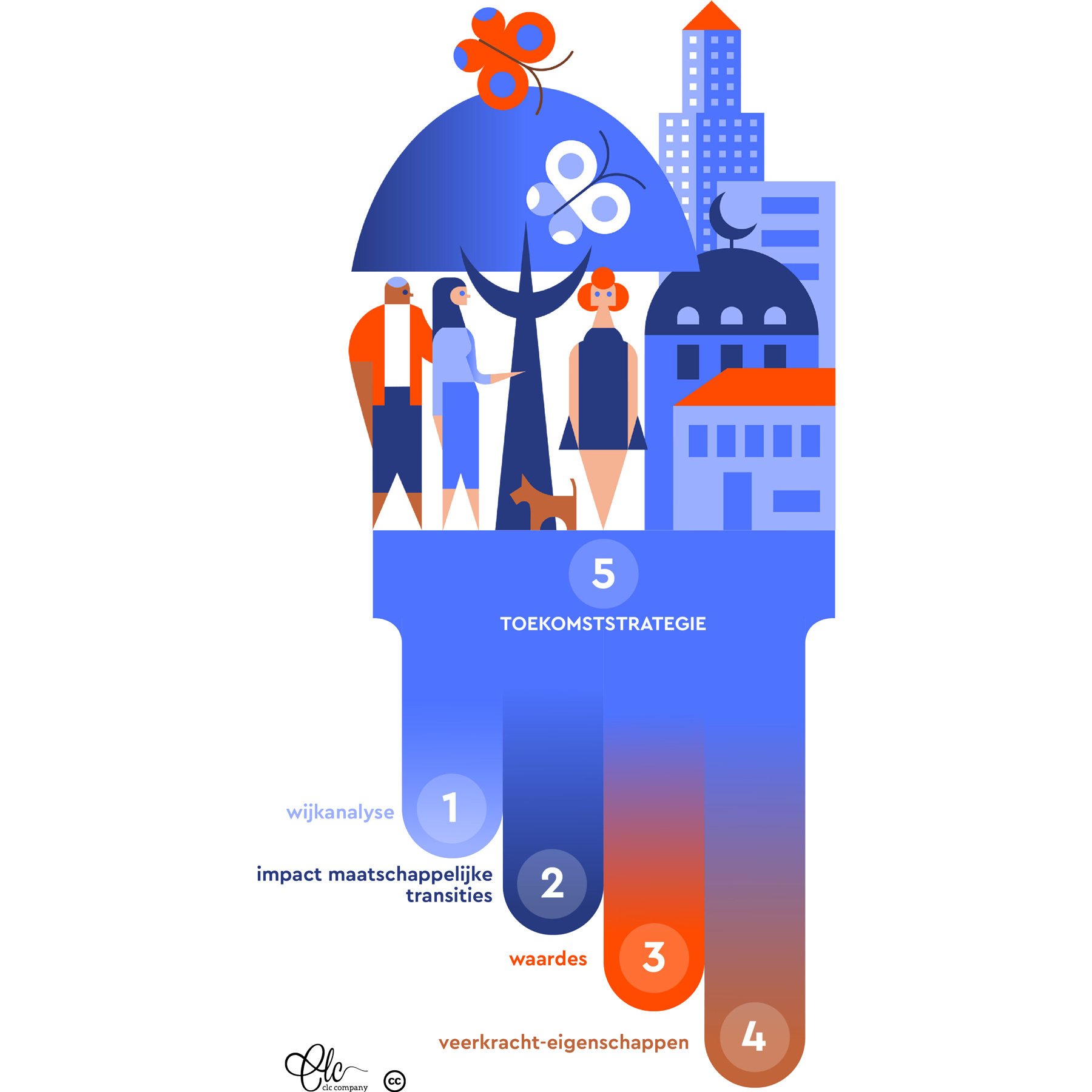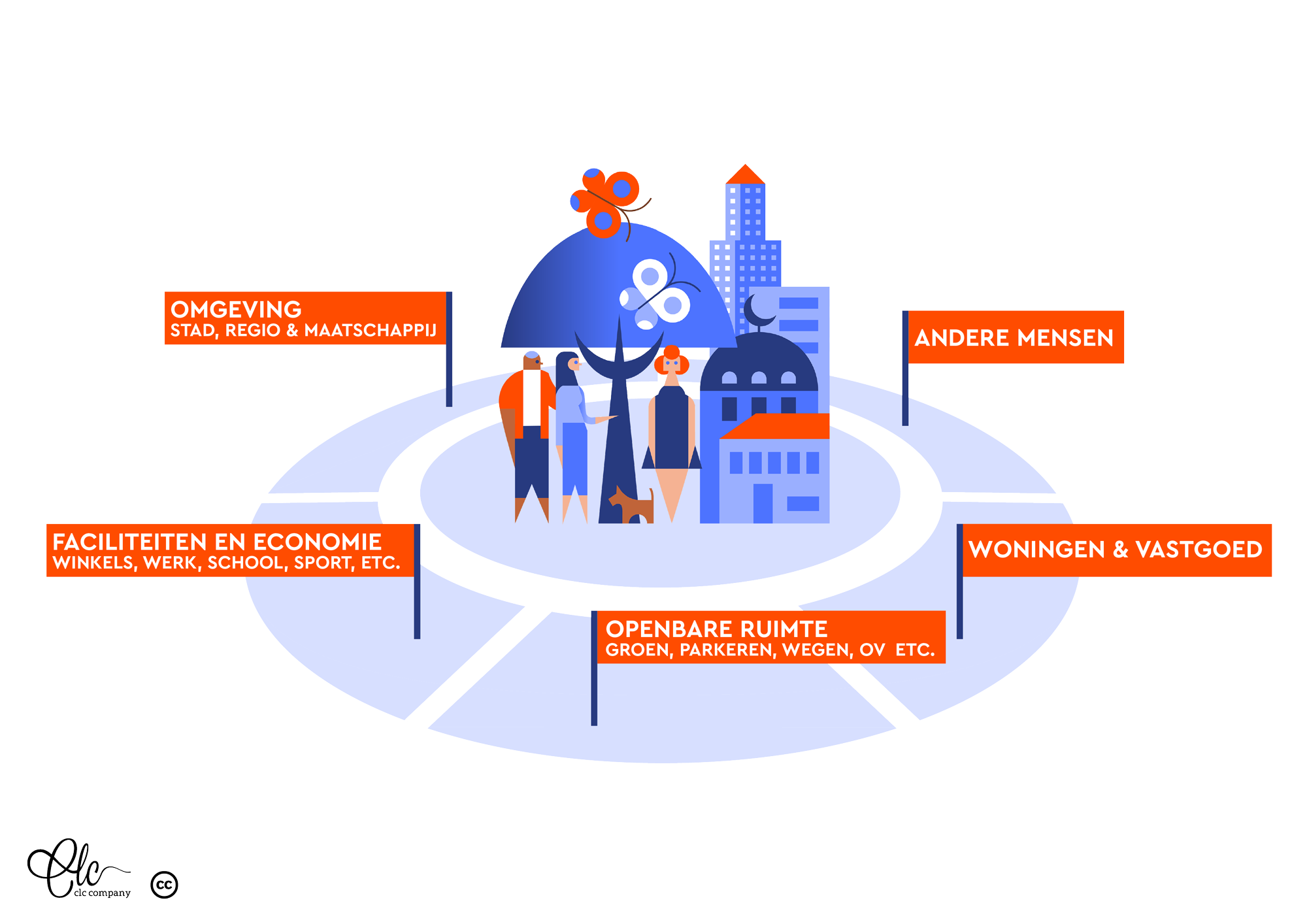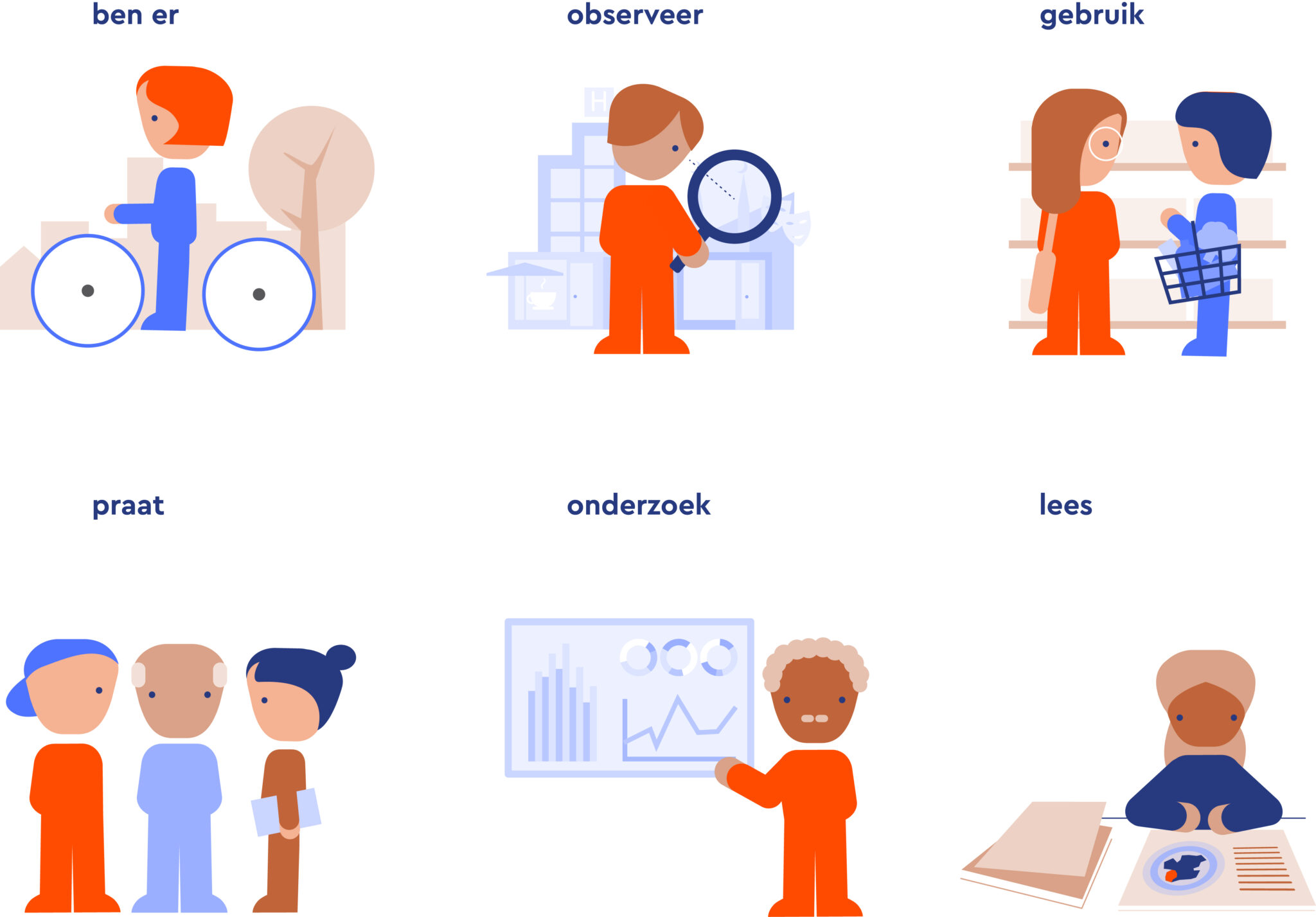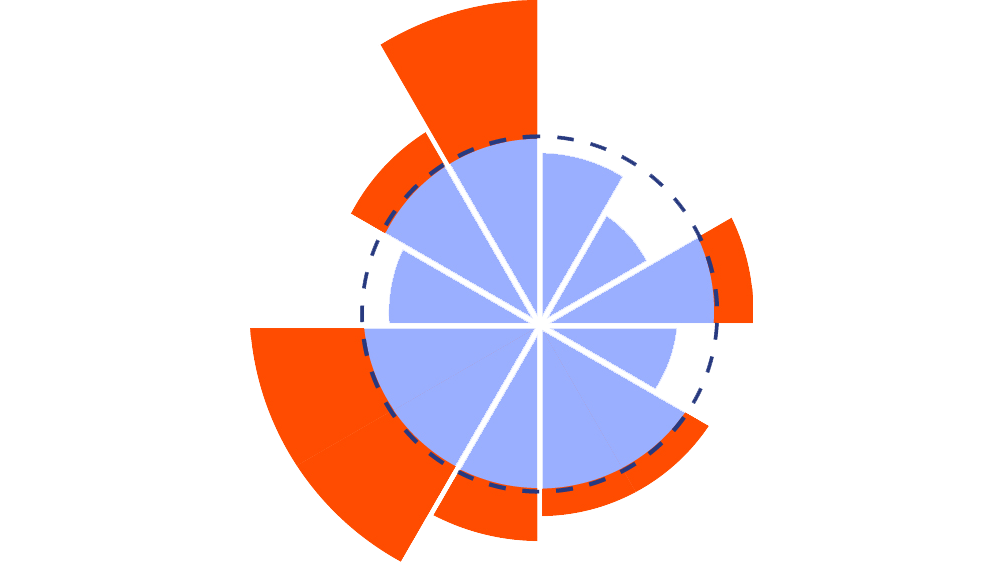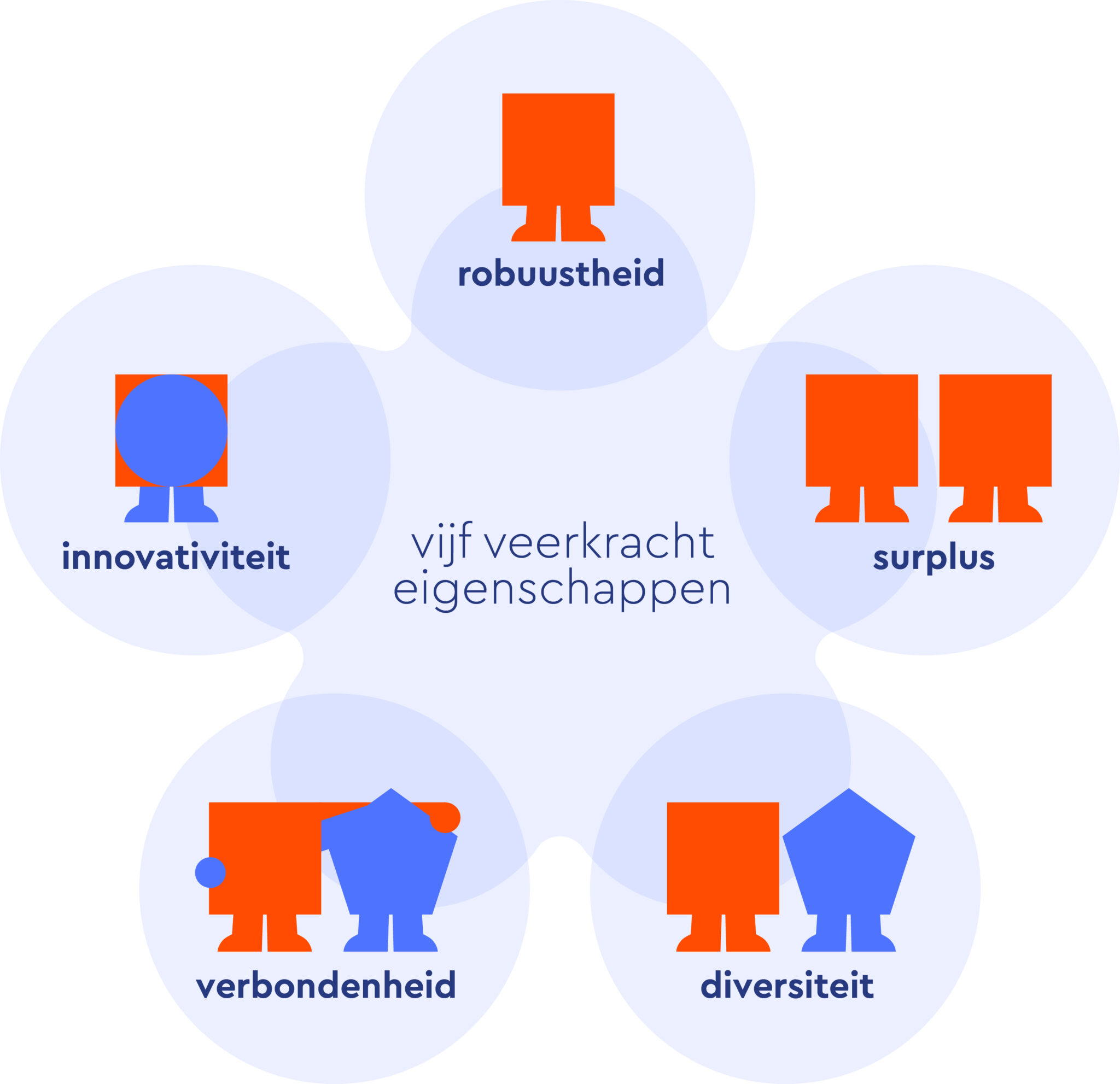Geen wijk staat los van de wereld eromheen. Grote maatschappelijke verschuivingen werken door tot in de huiskamers, straten en pleinen. Denk aan het instorten van de auto-industrie op wijken in Detroit, of het verdwijnen van de mijnbouw op Limburgse wijken.
Maatschappelijke transities betrekken in een strategie-ontwikkeling is pittig. Het vraagt om professionals die de transities kennen, de impact op de wijk ontdekken, en die een visie op de toekomst van de wijk kunnen inbrengen in een integraal verhaal.
Ik laat hier alleen vanuit een helicopterview zien hoe deze maatschappelijke transities betrokken kunnen worden in het totaalbeeld. Dit vormt de tweede pijler van het bouwen aan een strategie.
Laat ik beginnen met een concreet voorbeeld. In Nederland staat de betaalbaarheid van het (gezondheids)zorgsysteem al jaren onder druk en opeenvolgende kabinetten hebben bezuinigd. Daardoor neemt de toegankelijkheid en beschikbaarheid van zorg ongemerkt (door gebruik van verhullende taal) af. Dit is verbonden met de transitie van het neoliberalisme naar een nieuwe maatschappelijke orde (hierover later meer): de markt zou zorg goedkoper maken en ruim aanbod creëren, maar toch blijkt dat niet optimaal te werken en dus zijn buren en familie weer nodig. Dit heeft direct impact op buurten. Mensen die slechts een beetje hulp nodig hebben (dus niet de ernstig zieken in zorginstellingen) blijven in hun eigen huis en worden geacht het daar te rooien. Zo dendert zorg ongemerkt de wijken in. Maar deze zijn daar totaal niet voor uitgerust. Sociale netwerken zijn namelijk niet sterk genoeg: buren helpen elkaar niet zó gemakkelijk en familieleden kunnen niet eenvoudig gaan samenwonen, omdat de woningmarkt vastzit en beschikbare woningen niet zijn ingericht op samenleven in groepen. Bewustzijn over deze maatschappelijke transitie is onmisbaar bij het maken van keuze voor de toekomst van een wijk.
Ik zie vier samenhangende maatschappelijke transities, op basis van verschillende transitiestudies.
- Een Nieuwe Orde
- Globalisering
- Digitalisering
- Duurzaamheid
Deze indeling is natuurlijk contextgevoelig, en mijn blik is Noord-Europees geworteld. Ik beschrijf hieronder wat mij opvalt als impact van maatschappelijke transities in wijken. Binnen een strategieproces moeten de makers van een plan eigen woorden kiezen om de impact van belangrijke transities op de buurt te formuleren. Mijn oproep is vooral óm deze stap te doorlopen, zodat transparant is waar keuzes vandaan komen; zodat ze ook besproken kunnen worden.
1.Nieuwe Orde – voorbij kapitalisme en neoliberalisme
Ik denk dat we wereldwijd, door decennia heen, in een versneld tempo zijn gevallen -en nog steeds vallen- voor de betovering van het kapitalisme en het liberalisme, en sinds de laatste twee decennia van de 20e eeuw het neoliberalisme. Die betovering gaat niet alleen over een bepaalde visie op hoe de markt of economie zou moeten functioneren. Kapitalisme en (neo-)liberalisme vormen namelijk ook een denkframe voor andere cruciale onderdelen van de samenleving. Denk aan het mensbeeld van de rationeel calculerende individu; aan de rol van de overheid, die zo klein mogelijk kan zijn; aan de rol van bedrijven, waarbij de vrije markt ook voor gemeenschappelijke voorzieningen als energie, internet en zorg als ideaal wordt gezien; aan het eigendom van grond, dat altijd in handen van iemand is en dus verhandelbaar; aan het gebruik van grondstoffen en voedsel, dat wordt beschouwd als oneindig en onbeperkt vermeerderbaar bij goede productie; en aan het productdenken, waarin alles – zelfs voedsel – wordt benaderd als industrieel en efficiënt te produceren. Kate Raworth fileert deze paradigma’s in haar werk (2017) haarscherp en zet er een alternatief naast.
Maar, volgens mij beleeft dit denkkader zijn nadagen. Ik zie scheuren in het oppervlak. Voorbeelden? Toenemende polarisatie in de politiek in combinatie met meer demonstraties, klimaatverandering als bewijs van een totaal faillissement, de groei van gewapende conflicten wereldwijd, de financiële crisis van 2008, de groeiende kloof tussen arm en rijk, het besef dat de beschaving nog steeds flagrante misstanden toelaat, de herwaardering van het koloniale verleden en hoe inheemse volkeren zijn gedevalueerd, de internet-verandering van een gemeenschappelijke speelplaats naar een ruimte die gedomineerd wordt door een handvol grote bedrijven, enzovoort.
De betovering bestond uit de droom dat een combinatie van kapitalisme en democratie, met een vleugje neoliberalisme, vanzelf zou leiden tot persoonlijke vrijheid en welvaart voor de hele mensheid. En ja, dat deed het deels ook – en zal het wellicht ook blijven doen – maar tegelijk heeft het niet zo goed uitgepakt als gehoopt, en zeker niet voor iedereen. Het systeem is uit balans geraakt en het lijkt een kwestie van tijd voordat het kantelt naar iets nieuws. Het is niet zo dat alle kapitalisme overboord moet, maar een herordening is wel nodig.
Wanneer ik schrijf over Nieuwe Orde, bedoel ik hiermee – op dit moment – geen uitgewerkt en samenhangend toekomstbeeld voor maatschappij en economie. Ik ben opgegroeid in een tijd van grote ‘ismen’ als communisme, liberalisme, fascisme en socialisme, en het kostte mij een tijdje om te beseffen dat we momenteel geen groots nieuw vervangend ideologisch maatschappijbeeld hebben. We bevinden ons echt in een transitie naar een toekomst die zich langzaam ontvouwt, zonder duidelijke contouren.
Wat ik wel zie is dat er steeds meer ruimte ontstaat voor het besef van onze onderlinge afhankelijkheid als mensen, voor de sociale aspecten van ons mens-zijn, én voor een natuurlijker positie van de mens in zijn omgeving. Ik zie als tekenen hiervan, in Europese landen, bijvoorbeeld: een roep om meer inclusieve democratie (zoals burgerberaden), groei van coöperaties (voor energie, wonen, zorg), toenemende belangstelling voor bewustzijnsgroei, de degrowth-beweging, groeiende aandacht voor het herstellen van de onrechtvaardige effecten van het kolonialisme, herwaardering van inheemse wijsheid, bewustwording van de nadelen van consumptiegedrag, interesse in regeneratieve landbouw, groei van de markt voor biologische en plantaardige voeding, en een radicalisering van het verzet tegen zwak klimaatbeleid. Dit geluid wordt sterker en doet iets met de ordening zoals we die kennen.
